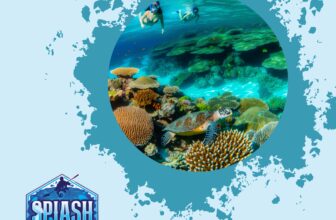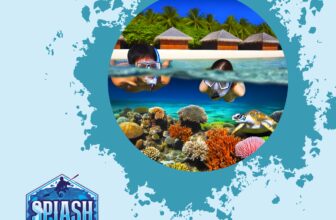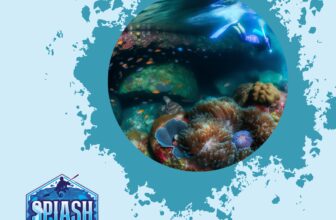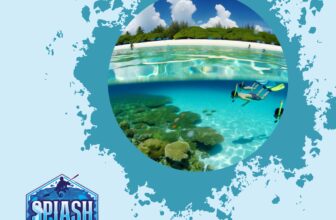
If you’re dreaming of floating above vibrant coral reefs surrounded by diverse marine life in tropical waters, the Hawaiian Islands are calling your name. For beginners or those considering starting their snorkeling journey, timing your visit can make a significant difference in what you see and experience. Let’s dive into understanding the best snorkeling season for each Hawaiian island and make your adventure one for the books.
Why Timing Matters: Understanding Seasonal Changes
Timing your snorkeling trip to the Hawaiian Islands isn’t just about booking the best flights or finding the ideal hotel. It’s crucial for ensuring that you experience the magic of the islands’ underwater world.
Weather Patterns
Hawaii’s weather can be a mixed bag, with each season offering something different. In the winter, particularly on the northern shores of the islands, the surf kicks up due to larger swells, which can churn up the sea and reduce visibility. This can make snorkeling a bit more challenging for beginners. On the flip side, the summer months usually promise calmer waters, especially on the south shores, perfect for clear and easy exploration.
Water Conditions
Temperatures and currents shift throughout the year, influencing both your comfort and the marine environment itself. Water temperatures around Hawaii range from about 73°F to 80°F. Although subtle, these changes can be felt if you’re in the water for extended periods. Summer typically brings warmer waters, which are less intimidating for beginners and can enhance your time spent floating above the reefs.
Marine Life Activity
Finally, sea life has its own calendar. Certain seasons offer peak sightings of different marine life. For instance, the winter months bring larger creatures like whales near the islands. While snorkeling, you might not see them directly, but their presence is unmistakable and awe-inspiring. Meanwhile, summer often offers plentiful sightings of vibrant reef fish and sea turtles in their full glory. Choosing the right season can optimize what you see under the waves, making your snorkeling journey truly unforgettable.
Optimal Times for Snorkeling in Hawaii
When it comes to snorkeling in Hawaii, timing can be key. Each season brings distinct conditions affecting water clarity, marine life activity, and overall safety, especially for those new to snorkeling.
Winter vs. Summer
Winter in Hawaii, roughly from November to February, can be a mixed bag for snorkeling. On one hand, the islands often see larger swells, especially on north-facing shores, which might not be beginner-friendly. However, the winter months bring with them the presence of majestic humpback whales, which is a treat if you're lucky enough to spot them during a snorkel tour. Alternatively, summer months from June to September offer calm seas and warmer waters. These conditions can be ideal for beginners, providing clearer visibility and gentler currents for a more relaxed experience.
Shoulder Seasons
The shoulder seasons, akin to spring (March-May) and fall (September-October), often strike a beautiful balance. During these times, the waters are usually calm, and there are fewer tourists, letting you enjoy a more tranquil snorkeling experience. Also, during shoulder seasons, you might witness some unique transitions in marine life as various species migrate or prepare for seasonal changes.
Weather Considerations
Hawaii's weather can be unpredictable, with occasional rain showers and trade winds affecting water conditions. It's wise to plan for a bit of flexibility in your snorkeling itinerary. Check local weather forecasts and consult with local shops or tour operators to ensure you're hitting the water during the safest and most enjoyable times. Understanding these seasonal variations equips you to make the most out of your snorkeling adventure, ensuring safety and enhancing your underwater experience.
Island-Specific Snorkeling Seasons
Oahu: A Year-Round Destination
Oahu shines as a perennial favorite for snorkelers, thanks to its friendly waters and vibrant marine environments. In the summer and fall, you're looking at calm seas—perfect for beginners who want to dip their toes into the world of snorkeling without tackling rough waves. Winter, however, brings larger swells, making it more suitable for those with experience. If you're just starting out, keep an eye on the forecasts or opt for the sheltered coves. Don't forget to check out more detailed snorkeling spots around Oahu here.
Kauai: The Garden Island
Kauai offers that sweet spot in the summer with perfect water conditions and gentle currents, making it prime time for newbies. The landscapes are breathtakingly lush, especially during winter; however, the swells can be challenging. If you're up for it, experiencing the greenery alongside water adventures is worth it, but always prioritize safety. For a deeper dive into Kauai's snorkeling scene and the seasons, see this guide.
Maui: The Valley Isle
Maui’s consistent snorkeling conditions make it a solid pick for anyone, anytime. The waters remain clear throughout the year, and there are always opportunities to see different facets of aquatic life as the seasons ebb and flow. Whether you're a first-timer or a seasoned snorkeler, the waters here won’t disappoint—it’s like Mother Nature’s own aquarium.
Big Island: Adventure Awaits
The Big Island truly comes alive in summer, when low winds and calm seas create an inviting atmosphere for snorkeling exploration. Not to be outdone, winter brings a special treat with larger marine life, like whales, making appearances. If you want that classic mix of thrilling adventures with serene snorkeling, this island's got you covered.
Highlighting the Best Marine Life Experiences
Snorkeling in Hawaii is like peeking into another world, one teeming with life and color beneath the waves. Depending on when you visit, you’ll encounter different landscapes of marine activity, each more astounding than the last.
Tropical Waters
Hawaii’s tropical waters are home to a rich variety of marine life that changes with the seasons. During the winter months, you have a good chance of spotting larger sea creatures such as humpback whales, which migrate to Hawaiian waters for breeding. As you glide through the water, you might also see spinner dolphins playfully jumping nearby.
Springtime ushers in a new cast of sea turtles, seeking warmer waters. These gentle giants are a treat to snorkel alongside and are often seen feeding on algae near coral reefs. Summer months, with their calm and clearer waters, provide the best chances to see vibrant schools of tropical fish like the rainbow-colored parrotfish or the lively butterflyfish darting around.
Coral Reefs
The health of the coral reefs can vary throughout the year, often looking their quintessential best in late spring and early summer when you’ll see their full palette of colors. Coral reefs are vital not only as breathtaking backdrops for your snorkeling selfies but also as bustling homes for countless species. The interplay of light, color, and movement around these reefs is mesmerizing and provides plenty of opportunities for observing fascinating marine behaviors.
Visiting during different times in the year can also give you insight into the dynamic lifecycle of the reefs. For example, you may witness coral spawning events, which often look like underwater snowstorms and are crucial for maintaining the healthy biodiversity of the marine ecosystem.
Snorkeling in Hawaii offers an unparalleled opportunity to observe these magnificent marine landscapes that are alive and changing with each season. So pack your snorkel and mask, and let Hawaii’s vibrant underwater world unveil itself to you in its unique seasonal splendor.
Getting the Most Out of Snorkeling Tours
Choosing the Right Tour
To maximize your snorkeling adventure in Hawaii, selecting the right tour is crucial. Consider the following factors which can make all the difference:
- Tour Timing and Seasonal Variations
- Summer (Peak Season)
- More tour options
- Higher prices
- Fuller groups
- Special perks like sunset snorkeling and visits to less crowded spots
- Shoulder Seasons (Early Spring and Late Fall)
- Competitive pricing
- Smaller group sizes, enhancing intimacy with the marine world
- Winter Season
- Unpredictable weather and larger swells
- Adjusted schedules and locations for safety and visibility
- Opportunity to see sea creatures heading south for the winter
- Summer (Peak Season)
Prioritize Safety and Reputation
When selecting a snorkeling tour, keep these pointers in mind:
- Look for operators committed to marine conservation
- They often provide richer educational experiences
- Ensure minimal environmental impact
- Questions to ask:
- What are the safety measures?
- What is the guide-to-group ratio?
- Is equipment provided, or should I bring my own gear?
Conclusion
Tailoring your tour choice to the season and conducting thorough research on reputable providers will ensure your snorkeling tour not only meets but exceeds your expectations, making your Hawaiian vacation unforgettable.
Essential Gear and Preparation Tips for Snorkeling
When preparing for a snorkeling adventure, having the right equipment and knowledge is vital for a safe and enjoyable experience.
Gear Checklist
To ensure a seamless snorkeling experience, remember to bring the following gear:
- Mask: Choose a comfortable mask that fits snugly to prevent leaks, allowing uninterrupted underwater views.
- Snorkel Tube: Opt for a snorkel that is easy to breathe through and designed to minimize water entry.
- Fins (Optional): Consider using fins to help you glide through the water effortlessly.
- Wetsuit: Depending on the ocean temperature, a wetsuit may be necessary to keep you warm.
- Reef-Safe Sunscreen: Protect both your skin and the marine ecosystem with environmentally friendly sunscreen.
Safety Tips
Safety should always be a priority when snorkeling. Keep these tips in mind:
- Snorkel with a Buddy: Snorkeling with someone adds to the enjoyment and provides an extra level of safety.
- Monitor Ocean Conditions: Stay informed about ocean conditions and avoid snorkeling after heavy rains due to decreased visibility and potential debris.
- Stay in Designated Areas: Respect boundaries and maintain a safe distance from marine life and coral to protect both yourself and the environment.
- Be Aware of Energy Levels: Keep track of your energy and always know where the shore is to ensure a safe return.
Preparation Guide
Adequate preparation can enhance your snorkeling experience. Consider the following steps:
- Evaluate Your Swimming Skills: Ensure you are confident in your swimming abilities. Practice in a pool if necessary before entering the ocean.
- Get Comfortable with Your Gear: Familiarize yourself with your equipment before your trip to avoid any surprises while snorkeling.
- Check Weather Reports: Choose the best days for snorkeling by staying informed about local weather conditions.
- Consider Beginner Tours: If you’re new to snorkeling, join beginner-friendly tours that offer helpful guidance and reassurance.
With the right gear, safety awareness, and preparation, you'll be well-equipped to explore the breathtaking underwater world.
Timing your visit with the best snorkeling season on the Hawaiian Islands can amplify your experience, opening up a world of vibrant marine life and surefire adventures. Each island offers a unique underwater paradise, so choosing the right time and place is key. Don't forget to prioritize safety and be mindful of the environment — protect those beautiful coral reefs and the creatures that inhabit them. Use trusted resources to find reputable tours and ensure you’re equipped with the right gear for comfort and safety. Whether you're eyeing Oahu's year-round promise or Maui's seasonal highlights, the effort you put into planning will pay off when you're floating above shimmering reefs, taking in all the beauty that these islands have to offer. For more snorkeling insights, check out our general guide on snorkeling and broader diving tips on our diving page.







